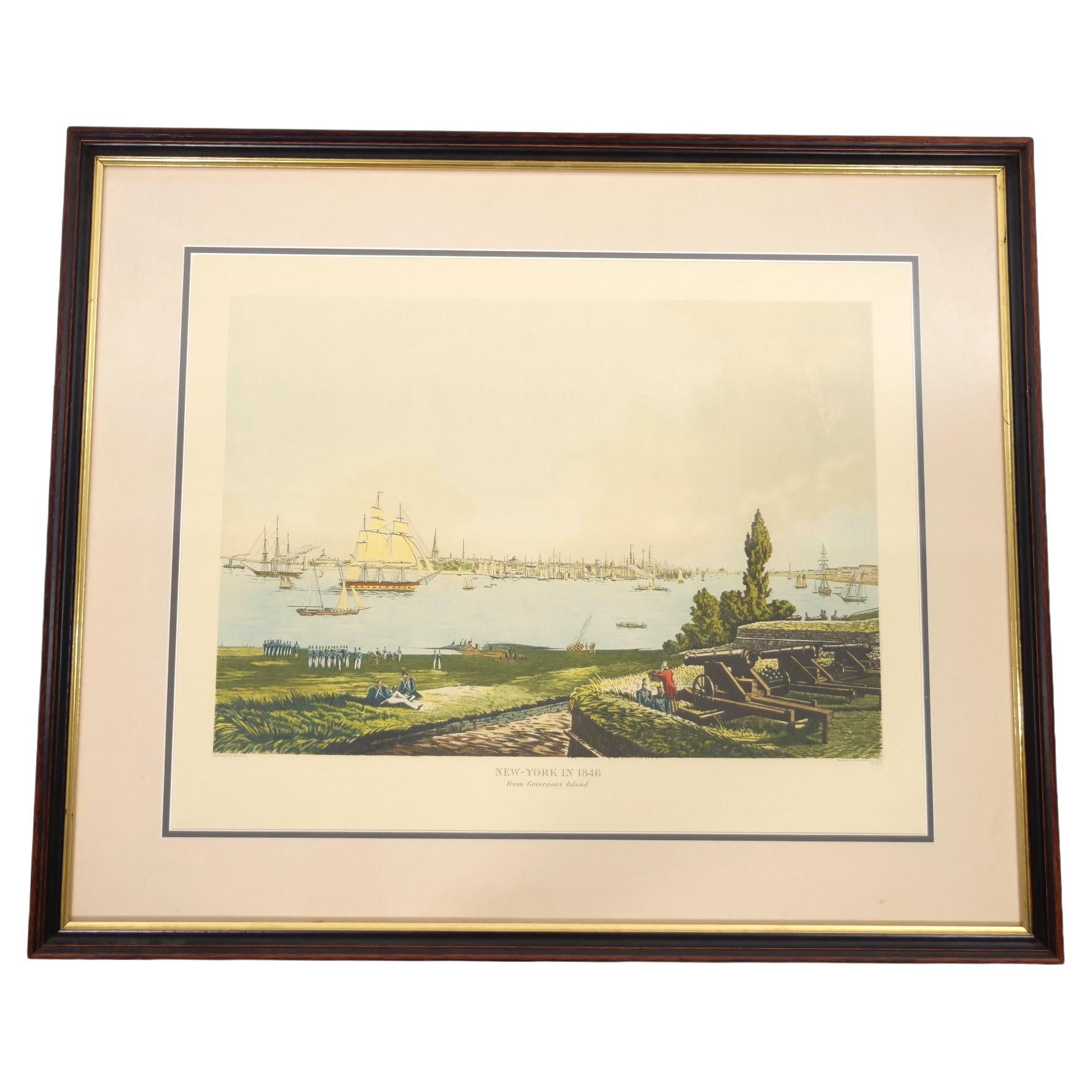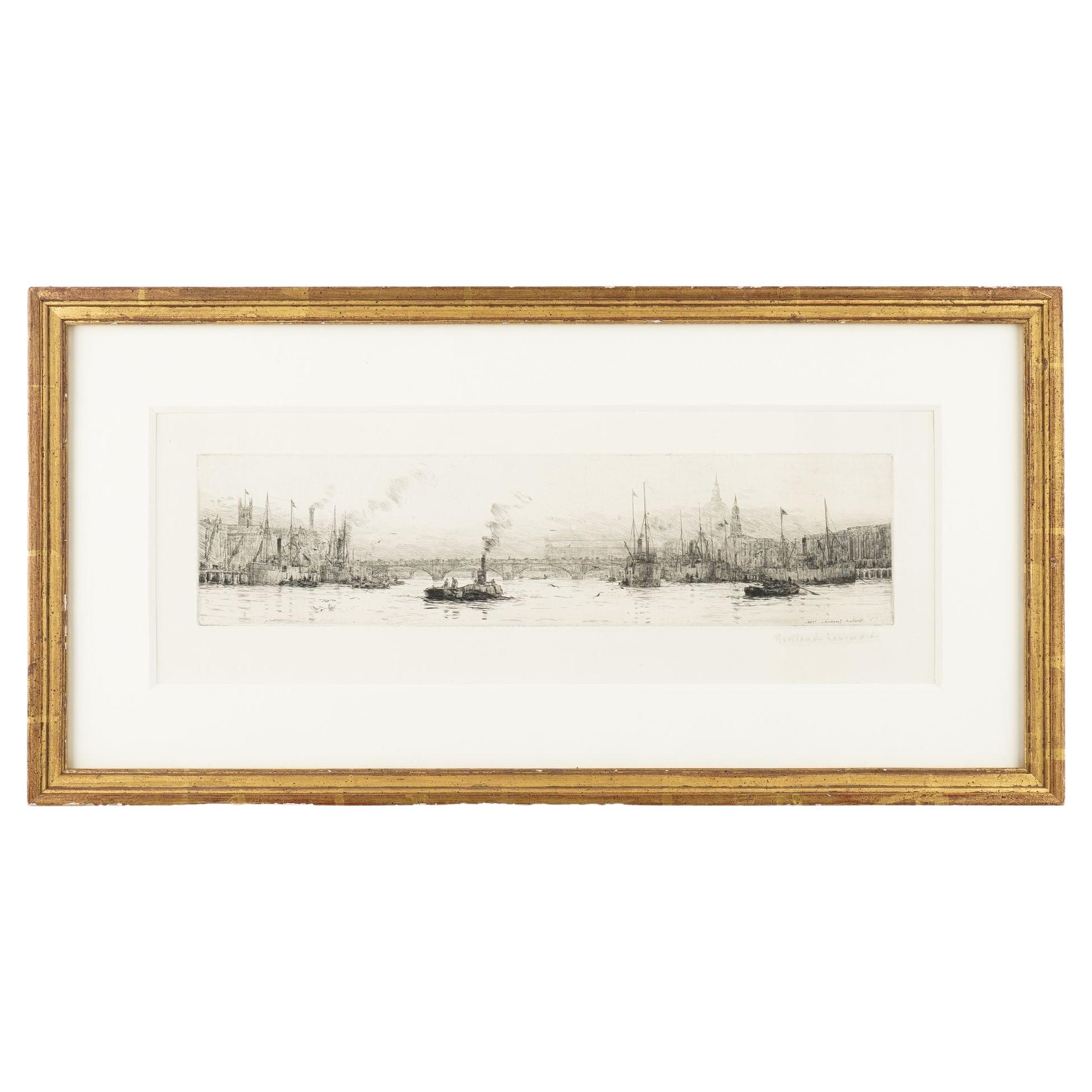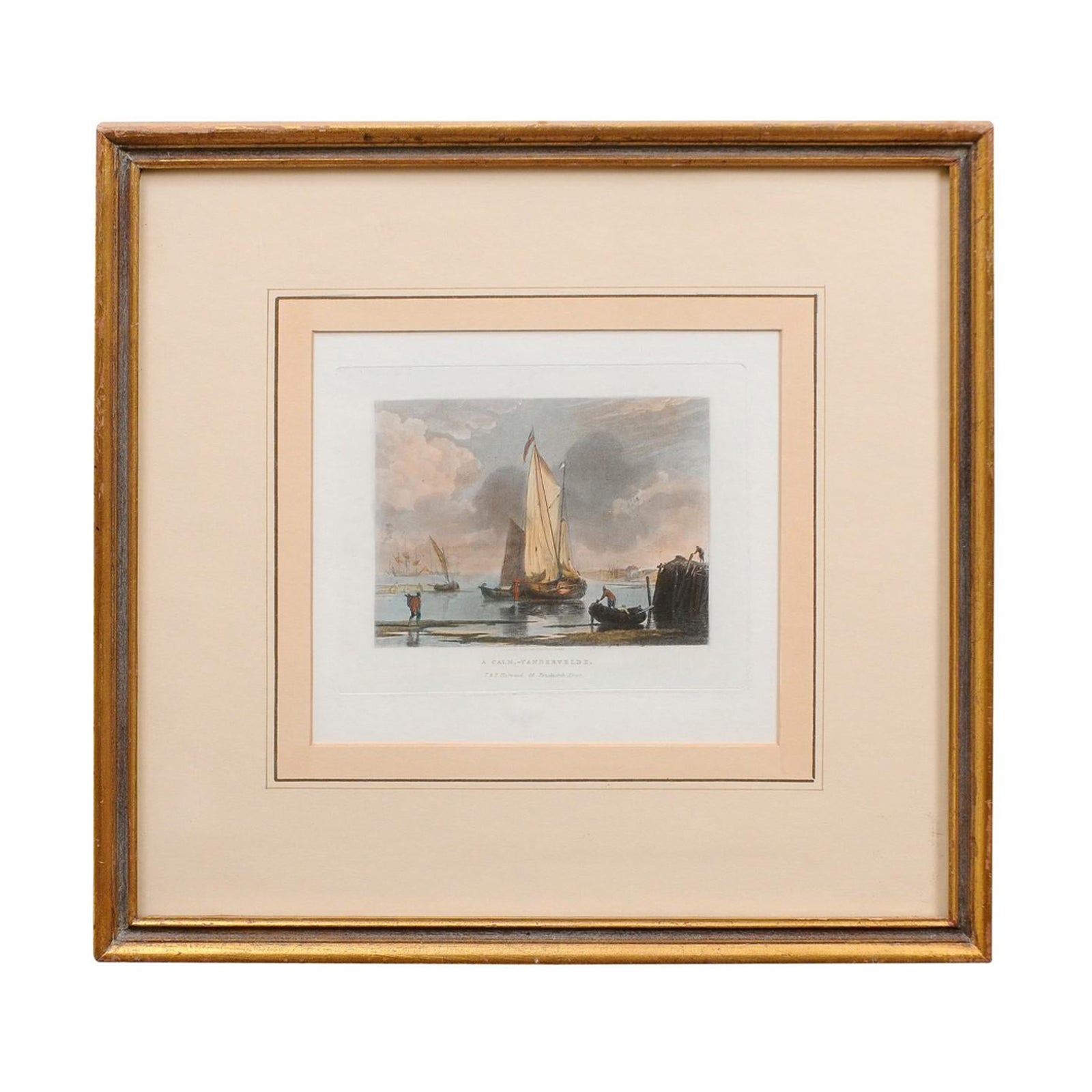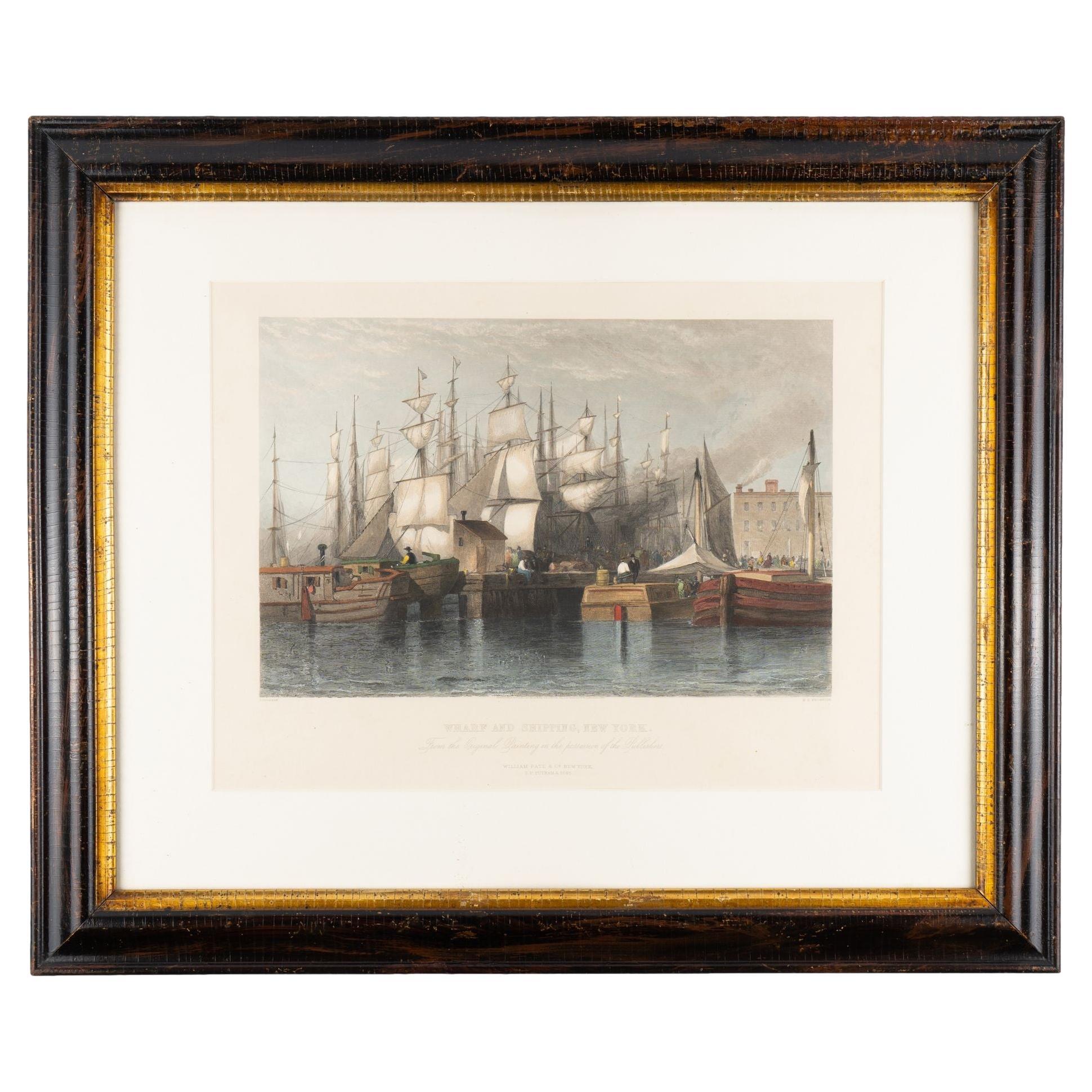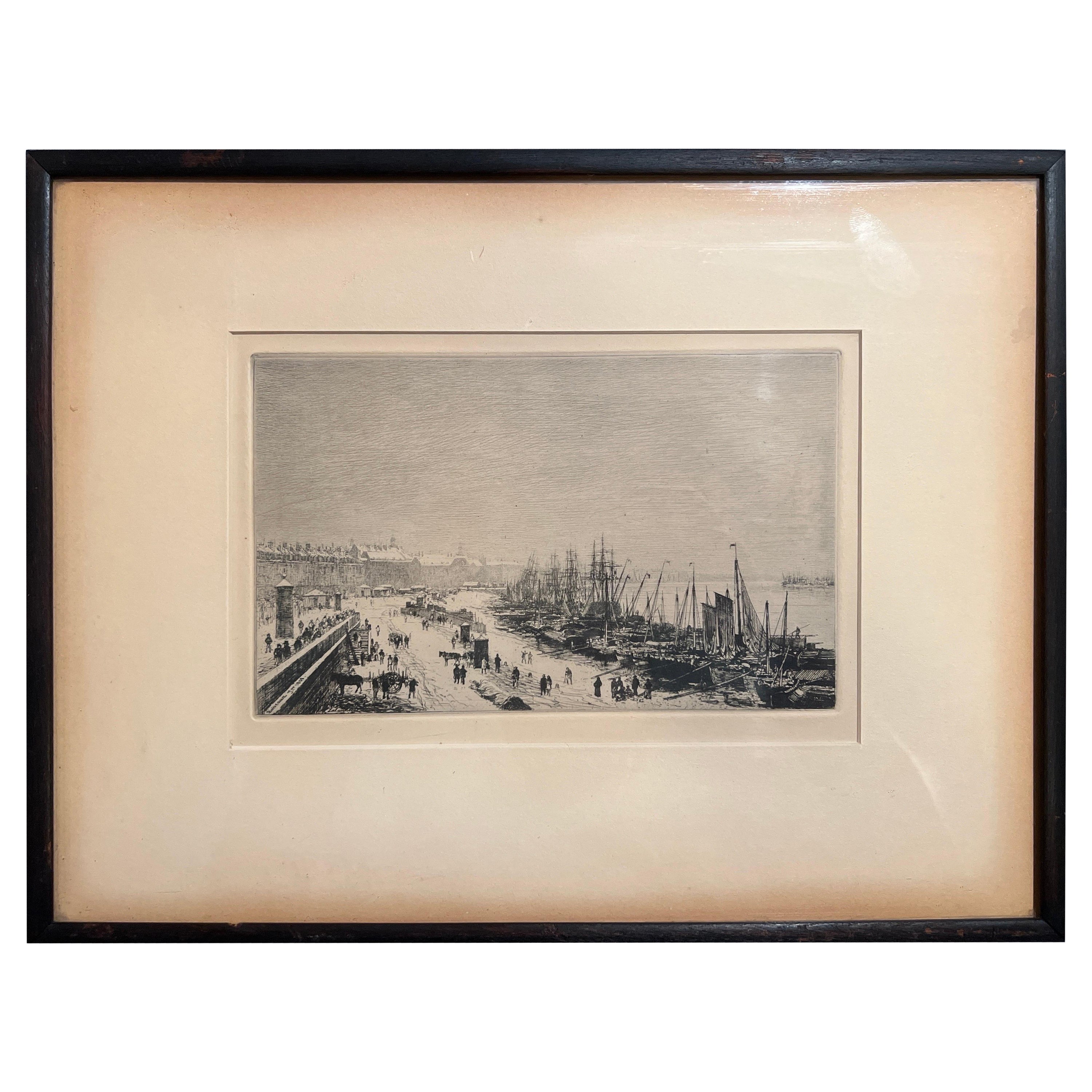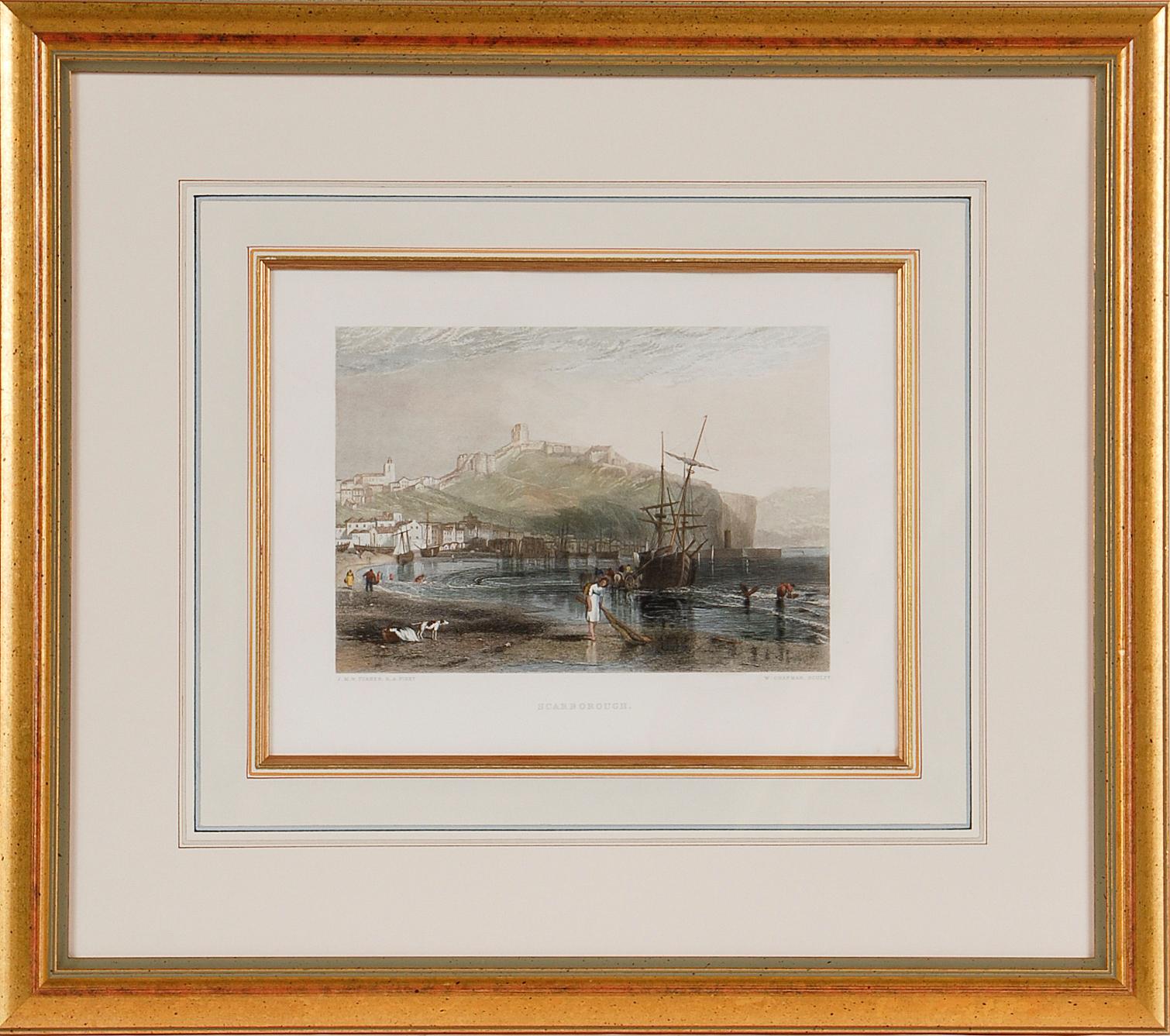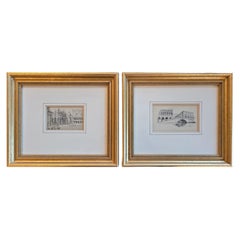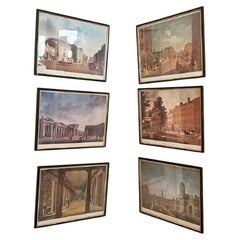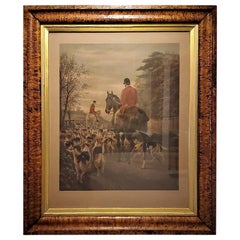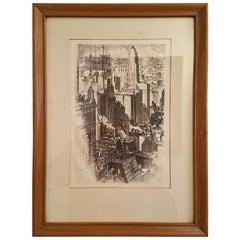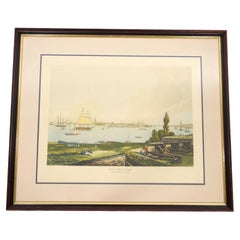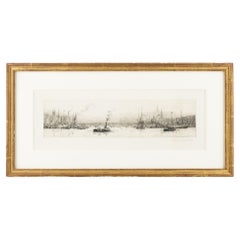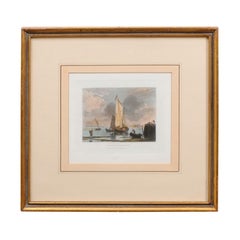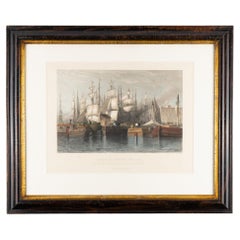Artículos similares a 19C Aquatint Engraving of the Quay at Waterford
¿Quieres más imágenes o vídeos?
Solicita imágenes o vídeos adicionales al vendedor
1 de 12
19C Aquatint Engraving of the Quay at Waterford
702,03 €
Acerca del artículo
Presenting a lovely 19C Aquatint Engraving of the Quay at Waterford in Waterford city in Ireland.
This engraving has been hand embellished with aquatint color(s) and is from Ireland circa 1820-40.
It features a scene of the Quay or Port of Waterford from circa 1820. We are basing this upon the attire of the figures in the engraving and the tall ships.
It features Reginald’s Tower (still located at the Waterford Quay to this day). Georgian Quay buildings, a number of moored tall ships and row boats, barrels, horses and carts, women and British soldiers.
The engraving was professionally reframed and matted in Dallas in the 1980’s and the rear of the frame says that it was “Museum Mounted and Matted”. The frame has a lovely Grecian pattern around the front.
If you are Irish, a Waterford Crystal Collector or have your ancestry from Waterford this is a must have !!
This is a very rare engraving !
The name ‘Waterford’ comes from Old Norse Veðrafjorðr ‘ram (wether) fjord‘. The Irish name is Port Láirge, meaning “Lárag’s port”.[6]
Viking raiders first established a settlement near Waterford in 853. It and all the other longphorts were vacated in 902, the Vikings having been driven out by the native Irish. The Vikings re-established themselves in Ireland at Waterford in 914, led at first by Ottir Iarla (Jarl Ottar) until 917, and after that by Ragnall ua Ímair and the Uí Ímair dynasty, and built what would be Ireland’s first city. Among the most prominent rulers of Waterford was Ivar of Waterford.
In 1167, Diarmait Mac Murchada, the deposed King of Leinster, failed in an attempt to take Waterford. He returned in 1170 with Cambro-Norman mercenaries under Richard de Clare, 2nd Earl of Pembroke (known as Strongbow); together they besieged and took the city after a desperate defence. In furtherance of the Norman invasion of Ireland, King Henry II of England landed at Waterford in 1171. Waterford and then Dublin were declared royal cities, with Dublin also declared capital of Ireland.
Throughout the medieval period, Waterford was Ireland’s second city after Dublin. In the 15th century Waterford repelled two pretenders to the English throne: Lambert Simnel and Perkin Warbeck. As a result, King Henry VII gave the city its motto: Urbs Intacta Manet Waterfordia (Waterford remains the untaken city).
After the Protestant Reformation, Waterford remained a Catholic city and participated in the confederation of Kilkenny – an independent Catholic government from 1642 to 1649. This was ended abruptly by Oliver Cromwell, who brought the country back under English rule; his son-in-law Henry Ireton finally took Waterford in 1650 after a major siege.[7] In 1690, during the Williamite War, the Jacobite Irish Army was forced to surrender Waterford in the wake of the Battle of the Boyne.
The 18th century was a period of huge prosperity for Waterford. Most of the city’s best architecture appeared during this time. A permanent military presence was established in the city with the completion of the Cavalry Barracks at the end of the 18th century.[8]
In the early 19th century, Waterford City was deemed vulnerable and the British government erected three Martello towers on the Hook Peninsula to reinforce the existing Fort at Duncannon. During the 19th century, great industries such as glass making and ship building thrived in the city.
The city was represented in the Parliament of the United Kingdom from 1891 to 1918 by John Redmond MP, leader (from January 1900) of the Irish Parliamentary Party. Redmond, then leader of the pro-Parnell faction of the party, defeated David Sheehy in 1891. In 1911, Br. Jerome Foley, Br. Dunstan Drumm and Br. Leopold Loughran left Waterford for Malvern, Australia. Here, they founded a Catholic college which is still in existence today.[9]
In July 1922, Waterford was the scene of fighting between Irish Free State and Irish Republican troops during the Irish Civil War.
- Dimensiones:Altura: 34,29 cm (13,5 in)Anchura: 29,21 cm (11,5 in)Profundidad: 1,91 cm (0,75 in)
- Estilo:Jorge III (Del período)
- Materiales y técnicas:Papel,Grabado
- Lugar de origen:
- Época:
- Fecha de fabricación:1820-1840
- Estado:Desgaste acorde con la edad y el uso. Very good original condition.
- Ubicación del vendedor:Dallas, TX
- Número de referencia:1stDibs: LU3978126152682
Sobre el vendedor
4,9
Vendedor Oro
Vendedores premium que mantienen una calificación de +4,3 y tiempos de respuesta de 24 horas
Establecido en 2015
Vendedor de 1stDibs desde 2018
393 ventas en 1stDibs
- EnvíoRecuperando presupuesto…Envío desde: Dallas, TX
- Política de devolución
Partes de esta página se han traducido automáticamente. 1stDibs no puede garantizar la exactitud de las traducciones. El inglés es el idioma predeterminado de este sitio web.
Garantía de autenticidad
En el improbable caso de que haya algún problema con la autenticidad de un artículo, ponte en contacto con nosotros en un plazo de 1 año para recibir un reembolso total. DetallesGarantía de devolución de dinero
Si tu artículo no es como se describe, sufre daños durante el transporte o no llega, ponte en contacto con nosotros en un plazo de 7 días para recibir un reembolso total. DetallesCancelación dentro de las 24 horas
Tienes un período de gracia de 24 horas para reconsiderar tu compra, sin preguntas.Vendedores profesionales aprobados
Nuestros vendedores de primera clase deben cumplir estrictos estándares de servicio para mantener la integridad de nuestros anuncios.Garantía de igualación de precios
Si encuentras que un vendedor publicó el mismo artículo por un precio menor en otro lado, igualaremos ese precio.Entrega global de confianza
Nuestra red de transporte de primera ofrece opciones de envío especializado en todo el mundo, que incluye envío personalizado.Más de este vendedor
Ver todoPareja de grabados de Venecia de N Erichsen 1904
Presentamos un precioso par de grabados de Venecia de N Erichsen 1904.
Este par de grabados fueron dibujados por N. Erichsen, que, según tenemos entendido, era un artista inglés d...
Categoría
principios del siglo XX, Italiano, Eduardiano, Impresiones
Materiales
Papel
1053 € juego
Conjunto de 6 grabados irlandeses de 19C de escenas de Dublín por James Malton
PRESENTACIÓN DE UN FABULOSO Y RARÍSIMO CONJUNTO DE 6 GRABADOS irlandeses de 19C con escenas de Dublín, por James Malton.
Conjunto de 6 grabados MUY RAROS Y VALIOSOS de escenas de Du...
Categoría
Antiguo, Fines del siglo XIX, Irlandés, Jorge II, Impresiones
Materiales
Madera, Papel
Siglo XIX EAS Douglas Escena de caza Aguatinta Grabado
Presentamos un precioso grabado al aguatinta de una escena de caza de EAS Douglas de finales del siglo XIX.
Coloreado a mano y pintado originalmente por Edward Algernon Stuart Dougl...
Categoría
Antiguo, Fines del siglo XIX, Inglés, Victoriano, Impresiones
Materiales
Papel
Grabado original de AC Webb del horizonte de Chicago en 1930
Presentamos un rarísimo grabado original de Alonzo C. Webb de la ciudad de Chicago con una vista del centro de la ciudad de 1930.
Este grabado está en magníficas condiciones origi...
Categoría
principios del siglo XX, Estadounidense, Art Decó, Dibujos
Materiales
Papel pergamino
19C Engraving of Lake Gaube in the Pyrenees by T Allom
Por Thomas Allom
Presenting a lovely 19C engraving of Lake Gaube in the Pyrenees by T Allom.
From circa 1850.
Besautiful depiction of Lake Gaube or Lac de Gaube in the French Pyrenees.
Origi...
Categoría
Antiguo, Mediados del siglo XIX, Francés, Victoriano, Impresiones
Materiales
Papel
Grabado original de AC Webb París de la Torre Mather de Chicago
Presentamos un rarísimo grabado original de Alonzo C. Webb de la ciudad de Chicago con una vista del centro de la ciudad de hacia 1930.
¡¡¡Una grabación visual e histórica de la h...
Categoría
principios del siglo XX, Estadounidense, Art Decó, Dibujos
Materiales
Papel pergamino
También te puede gustar
Nueva York / 1846 Aguafuerte enmarcado según Frederick Caitherwood
Adéntrate en el pasado con este cautivador grabado al aguatinta titulado "Nueva York en 1846 desde Governors Island", copia fiel del boceto original del renombrado artista Frederick ...
Categoría
principios del siglo XX, Estadounidense, Impresiones
Materiales
Papel
Grabado de Londres desde los muelles por Rowland Langmaid, 1926
Grabado en cobre panorámico de Londres sobre el río Támesis desde los Docklands.
Inglés, 1926.
Dimensiones: 20-1/4" ancho x 10-1/8" alto x 3/4" fondo (enmarcado)
Categoría
Vintage, Década de 1920, Británico, Impresiones
Materiales
Papel
Grabado enmarcado del siglo XIX de un velero, Londres
Grabado enmarcado del siglo XIX de un velero, Londres
Categoría
Antiguo, siglo XIX, Inglés, Arte decorativo
Materiales
Papel
Muelle y transporte marítimo, Nueva York por H.S. Beckwith, 1869
Grabado coloreado a mano del puerto de Nueva York por H. S. Beckwith según S. Coleman. Debajo de la obra hay una etiqueta que dice "Muelle y navegación, Nueva York". Del Cuadro Origi...
Categoría
Antiguo, Década de 1860, Estadounidense, Impresiones
Materiales
Papel
Maxime Lalanne "Rade de Bordeaux" aguafuerte original C. 1868
Se trata de un aguafuerte de mediados del siglo XIX titulado "Rade de Bordeaux, Janvier" (Puerto de Burdeos en invierno), Maxime Lalanne en Londres en 1868. El aguafuerte representa ...
Categoría
Antiguo, siglo XIX, Francés, Impresiones
Materiales
Papel
417 € Precio de venta
Descuento del 20 %
Vista de Scarborough, Inglaterra: Un grabado enmarcado del siglo XIX según J.M.W. Turner
Por J.M.W. Turner
Este hermoso grabado enmarcado del siglo XIX "Scarborough", obra de W. Chapman, está basado en un cuadro original del célebre artista británico J.M.W. Turner. Fue publicado en Londre...
Categoría
Mediados del siglo XIX, Romántico, Impresiones de paisajes
Materiales
Grabado
